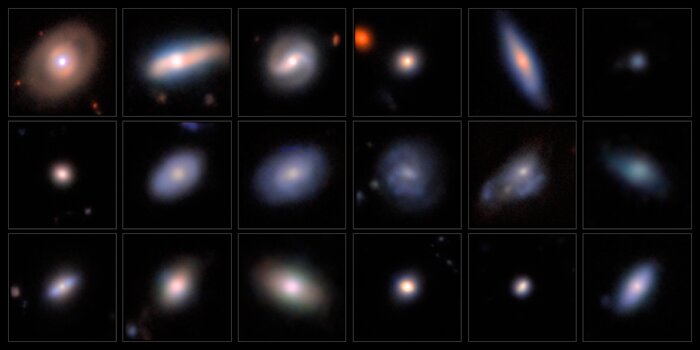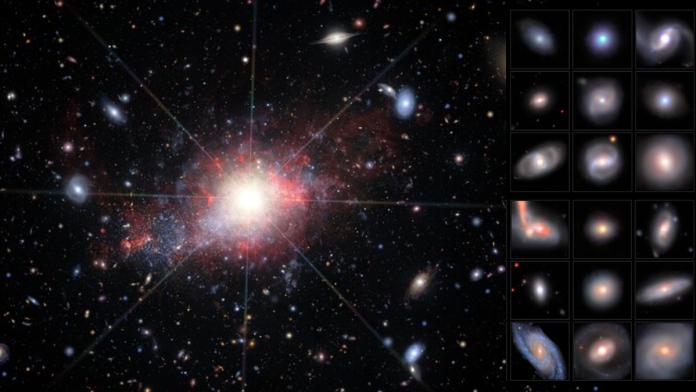Astronomers have found numerous feeding black holes in dwarf galaxies, which are small galaxies with thousands to billions of stars but very little gas. This discovery was made using the Dark Energy Spectroscopic Instrument (DESI) and includes a collection of intermediate-mass black holes that were previously missing.
This discovery represents the largest sample of dwarf galaxies with active black holes and the biggest collection of intermediate-mass black holes ever recorded. These findings could provide insights into the relationship between the evolution of dwarf galaxies and the growth of black holes, contributing to a better understanding of the universe’s early black holes.
One mystery surrounding this discovery is the lower number of mid-sized black holes in the data than expected by the research team.
“When a black hole at the center of a galaxy starts feeding, it unleashes a tremendous amount of energy into its surroundings, transforming into what we call an active galactic nucleus,” said team leader and University of Utah researcher Ragadeepika Pucha in a statement. “This dramatic activity serves as a beacon, allowing us to identify hidden black holes in these small galaxies.”
Some mid-sized black holes are big eaters
Intermediate-mass black holes are intriguing to scientists because they exist in the mass gap between stellar mass black holes and supermassive black holes. These mid-sized black holes are believed to be remnants of the first black holes formed in the universe, serving as the “seeds” for supermassive black holes.
By discovering 2,500 candidate dwarf galaxies hosting an active galactic nucleus, the team uncovered around 300 intermediate-mass black holes. This data suggests that scientists have been missing a significant number of low-mass black holes.
DESI, located at the Kitt Peak National Observatory, played a crucial role in this discovery by capturing light from 5,000 galaxies simultaneously. The team utilized data from DESI’s first year of observation, which included light from 410,000 galaxies, revealing a higher rate of dwarf galaxies hosting an active galactic nucleus compared to previous samples.

This discovery challenges previous notions that black holes in dwarf galaxies fall within the mass range of intermediate-mass black holes. The team’s findings raise new questions and mysteries for scientists to explore further.
The team’s research was published on Wednesday (Feb. 19) in The Astrophysical Journal.




